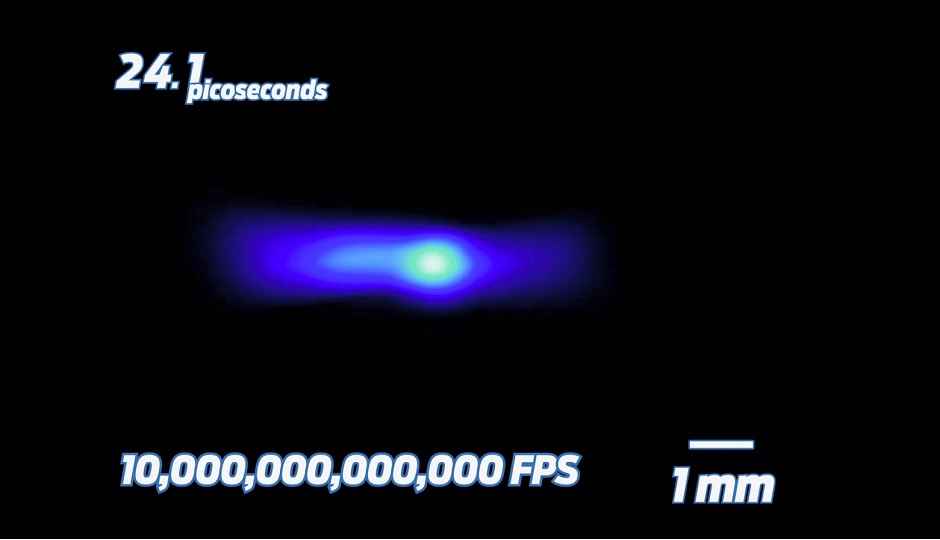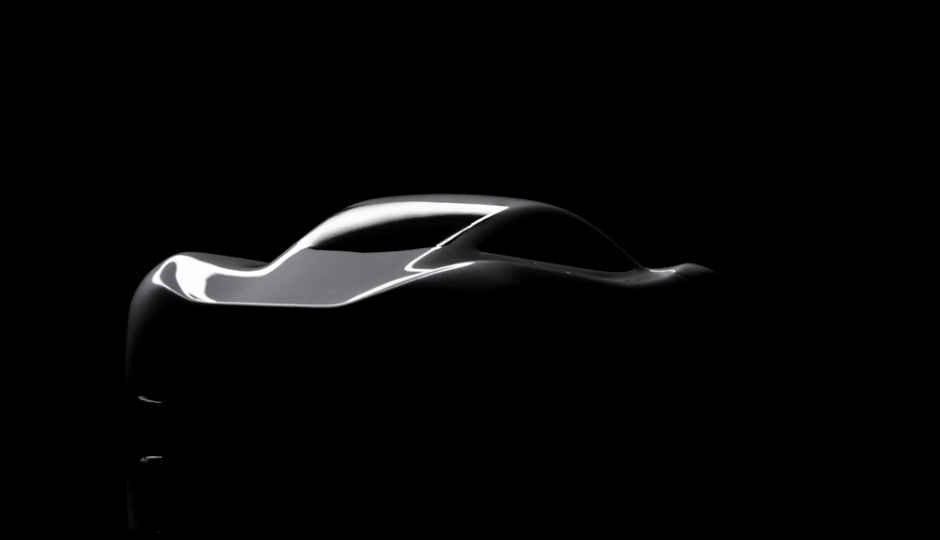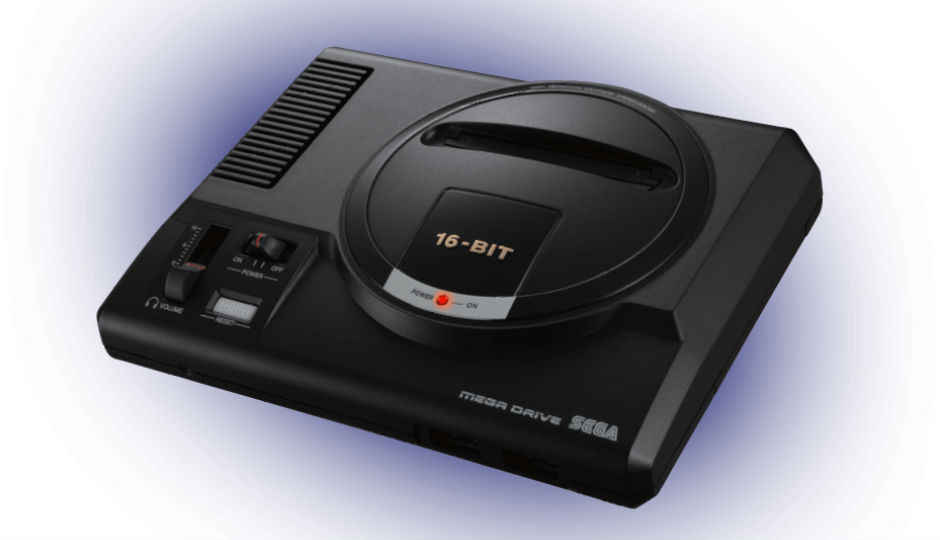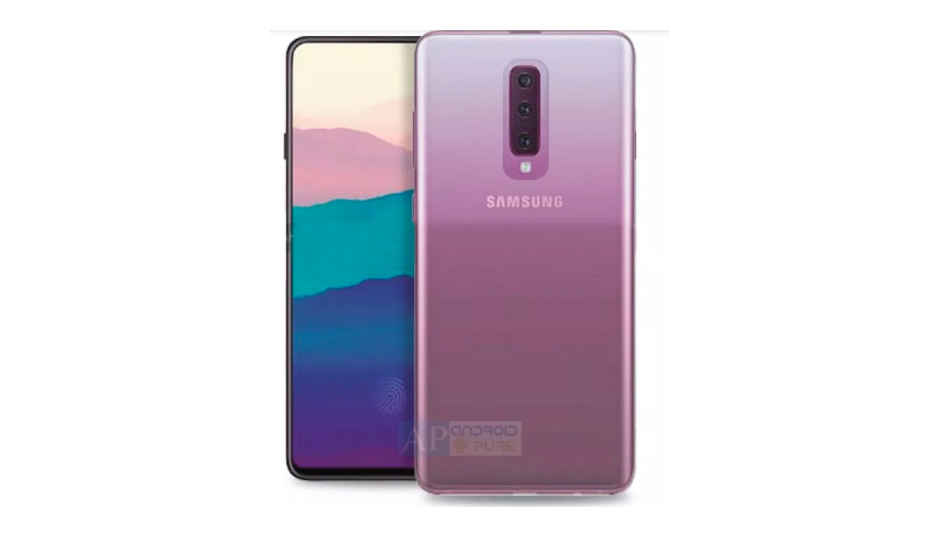 Highlights: Xiaomi India is teasing a smart cooking device. This could be an April Fools' Day prank. It could also be the Xiaomi Smart Rice Cooker. Xiaomi is known for selling a lot of smart home products in its home country China. The company’s product portfolio includes washing machines, ACs, Water Purifiers, Rice Cookers and many other smart home-centric devices. Since all of these are still not available in India and the company has said in the past that it is looking to expand its product portfolio in the country, one can expect some popular Xiaomi home products to trickle down to Indian shores in the coming months. Xiaomi India is now teasing a Smart Cooking device on its Twitter handle. In its Twitter post, the company write - “Burgers, pizzas, pasta, biryani! Why does tasty food always end up being unhealthy & calorie heavy? Things are about to change. Can you guess what's coming?” If we have to venture a guess looking at the teaser, we would say that Xiaomi could be planning to launch its Smart Rice Cooker in India, since one of the devices shown in the company’s video teaser looks like it. However, it is April 1 and this could be Xiaomi’s April Fools’ Day prank. If it is a prank indeed, it’s not a very smart one because the company is teasing a product that actually exists. If Xiaomi is in fact launching the Smart Rice Cooker in India, we’re not sure if the country is a great market for such a product. While India is a major rice-eating nation, it’s difficult to imagine Indians buying a smart, smartphone-controlled device to cook it. However, this might not stop the company from releasing such a product in the market. Nevertheless, multiple Mi followers have responded to Xiaomi's teaser on Twitter. While some have tried to guess the product, some believe it to be a prank. Xiaomi India has also responded to many tweets either with a funny GIF or emoji. We bet this is a prank. What do you think? April Fools’ Day pranks have been going around in the tech community since last Friday. OnePlus is taking followers on a ride on its electric Warp Car on the occassion of April Fools’ Day. You can read all about it here. Burgers, pizzas, pasta, biryani! Why does tasty food always end up being unhealthy & calorie heavy? Things are about to change. Can you guess what's coming?
Highlights: Xiaomi India is teasing a smart cooking device. This could be an April Fools' Day prank. It could also be the Xiaomi Smart Rice Cooker. Xiaomi is known for selling a lot of smart home products in its home country China. The company’s product portfolio includes washing machines, ACs, Water Purifiers, Rice Cookers and many other smart home-centric devices. Since all of these are still not available in India and the company has said in the past that it is looking to expand its product portfolio in the country, one can expect some popular Xiaomi home products to trickle down to Indian shores in the coming months. Xiaomi India is now teasing a Smart Cooking device on its Twitter handle. In its Twitter post, the company write - “Burgers, pizzas, pasta, biryani! Why does tasty food always end up being unhealthy & calorie heavy? Things are about to change. Can you guess what's coming?” If we have to venture a guess looking at the teaser, we would say that Xiaomi could be planning to launch its Smart Rice Cooker in India, since one of the devices shown in the company’s video teaser looks like it. However, it is April 1 and this could be Xiaomi’s April Fools’ Day prank. If it is a prank indeed, it’s not a very smart one because the company is teasing a product that actually exists. If Xiaomi is in fact launching the Smart Rice Cooker in India, we’re not sure if the country is a great market for such a product. While India is a major rice-eating nation, it’s difficult to imagine Indians buying a smart, smartphone-controlled device to cook it. However, this might not stop the company from releasing such a product in the market. Nevertheless, multiple Mi followers have responded to Xiaomi's teaser on Twitter. While some have tried to guess the product, some believe it to be a prank. Xiaomi India has also responded to many tweets either with a funny GIF or emoji. We bet this is a prank. What do you think? April Fools’ Day pranks have been going around in the tech community since last Friday. OnePlus is taking followers on a ride on its electric Warp Car on the occassion of April Fools’ Day. You can read all about it here. Burgers, pizzas, pasta, biryani! Why does tasty food always end up being unhealthy & calorie heavy? Things are about to change. Can you guess what's coming?from Latest Technology News https://ift.tt/2UoTw1S
 Highlights: YouTubers film speed of light at 10 trillion frames per second. They used the T-CUP camera at Caltech. You’ve got to admit: slow motion videos are pretty cool. We’ve all come across slow motion (or “slow mo”) clips of everyday occurrences on TV, like a water balloon bursting, a bullet being from a gun underwater, jelly bouncing about on the cone of a subwoofer, stuff like that. But the latest video from The Slow Mo Guys on YouTube tops all of that—it shows a beam of light visibly passing through the entire length of a tiny vial. We must remember that light is the fastest thing known to humankind; it travels at 299,792,458 metres per second. To achieve this video, show presenters Gavin Free (Gav) and Daniel Gruchy (Dan) headed to the WM Keck Engineering Laboratories at the California Institute of Technology, where they were able to get their hands on “the world’s fastest camera” for a small set of experiments. Called the T-CUP (trillion-frame-per-second compressed ultrafast photography), the camera is capable of achieving single-shot, real-time imaging speeds of up to 10 trillion frames per second, which is a hundred times greater than the fastest camera out there. “In particular, T-CUP brings together the concepts of compressed sensing and the Radon transformation, which uses only two projections to reconstruct a high-quality 3-D spatiotemporal data cube. The T-CUP system is also built on a femtosecond streak camera, which provides the fastest possible temporal shearing to achieve Tfps [(trillion frames per second)] imaging speeds,” explains Optics & Photonics News, The Optical Society’s monthly news magazine. In the first experiment seen in the YouTube video, the duo record a beam of laser light passing through a small bottle of diluted milk at about 100 billion frames per second with the help of Postdoctoral Scholar Peng Wang. At that speed, the beam takes approximately 2,030 picoseconds to travel from one end of the bottle to the other. For reference, one picosecond is one trillionth of a second (0.000000000001 second). In the second experiment, Wang traps the light beam inside a tiny cavity called “chaotic cavity”. It has mirrors on the inside walls and is covered in water vapour. Shot at 100 billion frames per second again, the beam of light passed into the cavity is seen bouncing off the mirrored walls furiously (about 25 times in a span of 2,500 picoseconds). In the third and last experiment, the trio use a tiny rectangular vial of diluted milk to shoot a beam of light at 10 trillion frames per second. The beam is seen passing through the entire length of the vial (which is only a few millimetres long) in less than 50 picoseconds assuming an indefinite ghostly “blob” shape. According to the duo, the T-CUP’s next upgrade might let it capture video at 1 quadrillion frames per second. Watch The Slow Mo Guys’ video below; it’s really quite cool: Related Read: Scientists prepare to drill for world's oldest ice core in Antarctica: Report
Highlights: YouTubers film speed of light at 10 trillion frames per second. They used the T-CUP camera at Caltech. You’ve got to admit: slow motion videos are pretty cool. We’ve all come across slow motion (or “slow mo”) clips of everyday occurrences on TV, like a water balloon bursting, a bullet being from a gun underwater, jelly bouncing about on the cone of a subwoofer, stuff like that. But the latest video from The Slow Mo Guys on YouTube tops all of that—it shows a beam of light visibly passing through the entire length of a tiny vial. We must remember that light is the fastest thing known to humankind; it travels at 299,792,458 metres per second. To achieve this video, show presenters Gavin Free (Gav) and Daniel Gruchy (Dan) headed to the WM Keck Engineering Laboratories at the California Institute of Technology, where they were able to get their hands on “the world’s fastest camera” for a small set of experiments. Called the T-CUP (trillion-frame-per-second compressed ultrafast photography), the camera is capable of achieving single-shot, real-time imaging speeds of up to 10 trillion frames per second, which is a hundred times greater than the fastest camera out there. “In particular, T-CUP brings together the concepts of compressed sensing and the Radon transformation, which uses only two projections to reconstruct a high-quality 3-D spatiotemporal data cube. The T-CUP system is also built on a femtosecond streak camera, which provides the fastest possible temporal shearing to achieve Tfps [(trillion frames per second)] imaging speeds,” explains Optics & Photonics News, The Optical Society’s monthly news magazine. In the first experiment seen in the YouTube video, the duo record a beam of laser light passing through a small bottle of diluted milk at about 100 billion frames per second with the help of Postdoctoral Scholar Peng Wang. At that speed, the beam takes approximately 2,030 picoseconds to travel from one end of the bottle to the other. For reference, one picosecond is one trillionth of a second (0.000000000001 second). In the second experiment, Wang traps the light beam inside a tiny cavity called “chaotic cavity”. It has mirrors on the inside walls and is covered in water vapour. Shot at 100 billion frames per second again, the beam of light passed into the cavity is seen bouncing off the mirrored walls furiously (about 25 times in a span of 2,500 picoseconds). In the third and last experiment, the trio use a tiny rectangular vial of diluted milk to shoot a beam of light at 10 trillion frames per second. The beam is seen passing through the entire length of the vial (which is only a few millimetres long) in less than 50 picoseconds assuming an indefinite ghostly “blob” shape. According to the duo, the T-CUP’s next upgrade might let it capture video at 1 quadrillion frames per second. Watch The Slow Mo Guys’ video below; it’s really quite cool: Related Read: Scientists prepare to drill for world's oldest ice core in Antarctica: Report Highlights: The OnePlus Warp Car can deliver a day's power with just 20 minutes of charging and you need 20 Warp Chargers to top up the battery. It drives using the smartphone's swipe gestures. The car also uses the phone's flashlight as the headlight and in-car lights. OnePlus has moved beyond phones and how. In a press release shared today, OnePlus announced it’s launching an electric car that will be blessed with the company’s Warp Charge capabilities and introduce never-before-seen automotive integration with a smartphone. Carl Pei, OnePlus co-founder took to the company’s forums to tease the announcement on Friday, and as outrageous as it sounds, here’s what the electric supercar will have to offer -- The Warp Car, as OnePlus is calling it will be made using SLS 3D and ABS 3D printing and will be designed to make it modular. Apparently, you can build up on the design at your home itself and add new features, replacing worn out ones. It’s also crafted like a modern supercar and OnePlus said you have to be no taller than 5 feet 8in and no shorter than 5 feet 6in to fit into the car. Furthermore, the OnePlus 6T will play a key role in handling the car. The phone is used as a steering wheel, replacing the traditional wheel. OnePlus says this does away with complicated concepts like steering a wheel. Instead, the user will simply have to swipe left to go left, swipe right to go right, swipe up to go forward and swipe down to go reverse. OnePlus said they will push out an OTA update to engage Airplane Mode when the phone is in driving mode, so “you won’t ever again suffer from dismissing a notification and accidentally turning the car”. More interesting is how the car gets its lights. It apparently uses a system of tunnels and mirrors that turns the smartphone’s flashlight into its headlights. You simply have to keep your flashlight turned on and slide it into the phone holder. The in-built system will light both the interior of the car and the headlights outside. The Warp Car will also integrate the front-and-rear facing cameras of the OnePlus 6T. The front-camera will automatically capture in-car selfies “when you’re looking especially good” while the rear-camera can take photos of the dials of the dashboard. Since it’s called Warp Car, it’s no surprise that it can charge super fast. The Warp Car can deliver a day’s power in just 20 minutes (something we have heard about the OnePlus 6T as well before), and you need to have to plug in 20 regular OnePlus Warp Chargers to top up the battery. If the idea doesn’t already sound outlandish enough, we have to burst you bubble and say this is all just a prank. Tech companies have made it a trend to take its loyal followers for a fun ride every year on April 1 and OnePlus is the latest brand to join in on the fun. Related Reads: Forget OnePlus TV, Carl Pei teases OnePlus Warp-Charged electric Car
Highlights: The OnePlus Warp Car can deliver a day's power with just 20 minutes of charging and you need 20 Warp Chargers to top up the battery. It drives using the smartphone's swipe gestures. The car also uses the phone's flashlight as the headlight and in-car lights. OnePlus has moved beyond phones and how. In a press release shared today, OnePlus announced it’s launching an electric car that will be blessed with the company’s Warp Charge capabilities and introduce never-before-seen automotive integration with a smartphone. Carl Pei, OnePlus co-founder took to the company’s forums to tease the announcement on Friday, and as outrageous as it sounds, here’s what the electric supercar will have to offer -- The Warp Car, as OnePlus is calling it will be made using SLS 3D and ABS 3D printing and will be designed to make it modular. Apparently, you can build up on the design at your home itself and add new features, replacing worn out ones. It’s also crafted like a modern supercar and OnePlus said you have to be no taller than 5 feet 8in and no shorter than 5 feet 6in to fit into the car. Furthermore, the OnePlus 6T will play a key role in handling the car. The phone is used as a steering wheel, replacing the traditional wheel. OnePlus says this does away with complicated concepts like steering a wheel. Instead, the user will simply have to swipe left to go left, swipe right to go right, swipe up to go forward and swipe down to go reverse. OnePlus said they will push out an OTA update to engage Airplane Mode when the phone is in driving mode, so “you won’t ever again suffer from dismissing a notification and accidentally turning the car”. More interesting is how the car gets its lights. It apparently uses a system of tunnels and mirrors that turns the smartphone’s flashlight into its headlights. You simply have to keep your flashlight turned on and slide it into the phone holder. The in-built system will light both the interior of the car and the headlights outside. The Warp Car will also integrate the front-and-rear facing cameras of the OnePlus 6T. The front-camera will automatically capture in-car selfies “when you’re looking especially good” while the rear-camera can take photos of the dials of the dashboard. Since it’s called Warp Car, it’s no surprise that it can charge super fast. The Warp Car can deliver a day’s power in just 20 minutes (something we have heard about the OnePlus 6T as well before), and you need to have to plug in 20 regular OnePlus Warp Chargers to top up the battery. If the idea doesn’t already sound outlandish enough, we have to burst you bubble and say this is all just a prank. Tech companies have made it a trend to take its loyal followers for a fun ride every year on April 1 and OnePlus is the latest brand to join in on the fun. Related Reads: Forget OnePlus TV, Carl Pei teases OnePlus Warp-Charged electric Car Highlights: The Sega Genesis Mini was announced in 2018 and will launch in the US on September 19, 2019. It will come with two controllers in the box. It will come with 40 games, 10 of which have been revealed. The Sega Genesis Mini has a release date. The console will launch on September 19, 2019. The console was first announced at the annual Sega Fest event in Tokyo in 2018 and the final release date was announced at the same event this year. The console will come with two USB controllers in the box along with a USB to Micro-B power cable and an HDMI cable. The console will come preloaded with 40 games, 10 of which have been revealed. It is priced at $79.99 USD/£69.99/€79.99/ $139.95 AUD which translates to roughly Rs 5,500 approx directly converted. Speaking of the “mini” size, the console is approximately 55% of the size of the original Genesis or Mega Drive. According to IGN, “Sega also revealed that AtGames, the company behind 2017’s poorly received Sega Genesis Flashback, is no longer involved in its production. Instead, longtime collaborator M2 is handling the ports, having previously delivered high-quality conversions for the SEGA AGES series and SEGA 3D Classics Collection.” This could possibly be the reason for the delay in the console hitting store shelves. When it comes to the revealed games, Sonic the Hedgehog, Ecco the Dolphin, Castlevania: Bloodlines, Space Harrier 2, Shining Force, Dr. Robotnik's Mean Bean Machine, ToeJam & Earl, Comix Zone, Altered Beast and Gunstar Heroes have been revealed. More information about the remaining 30 games will be revealed in the future. With the launch of the Nintendo classic, we have seen the birth of the classic gaming consoles. The PlayStation Classic, when it launched was met with an underwhelming response (we're putting it mildly here) because of the game library the console brought with it. The lacklustre response of the PS One Classic and the success of the NES Classic proves that it is the library of games that will help the classic console succeed or fail. Read more: Exclusive: Call of Duty: Mobile coming to India in November PUBG Mobile Beta update 0.12.0 is out now Understanding Google's cloud gaming service Stadia
Highlights: The Sega Genesis Mini was announced in 2018 and will launch in the US on September 19, 2019. It will come with two controllers in the box. It will come with 40 games, 10 of which have been revealed. The Sega Genesis Mini has a release date. The console will launch on September 19, 2019. The console was first announced at the annual Sega Fest event in Tokyo in 2018 and the final release date was announced at the same event this year. The console will come with two USB controllers in the box along with a USB to Micro-B power cable and an HDMI cable. The console will come preloaded with 40 games, 10 of which have been revealed. It is priced at $79.99 USD/£69.99/€79.99/ $139.95 AUD which translates to roughly Rs 5,500 approx directly converted. Speaking of the “mini” size, the console is approximately 55% of the size of the original Genesis or Mega Drive. According to IGN, “Sega also revealed that AtGames, the company behind 2017’s poorly received Sega Genesis Flashback, is no longer involved in its production. Instead, longtime collaborator M2 is handling the ports, having previously delivered high-quality conversions for the SEGA AGES series and SEGA 3D Classics Collection.” This could possibly be the reason for the delay in the console hitting store shelves. When it comes to the revealed games, Sonic the Hedgehog, Ecco the Dolphin, Castlevania: Bloodlines, Space Harrier 2, Shining Force, Dr. Robotnik's Mean Bean Machine, ToeJam & Earl, Comix Zone, Altered Beast and Gunstar Heroes have been revealed. More information about the remaining 30 games will be revealed in the future. With the launch of the Nintendo classic, we have seen the birth of the classic gaming consoles. The PlayStation Classic, when it launched was met with an underwhelming response (we're putting it mildly here) because of the game library the console brought with it. The lacklustre response of the PS One Classic and the success of the NES Classic proves that it is the library of games that will help the classic console succeed or fail. Read more: Exclusive: Call of Duty: Mobile coming to India in November PUBG Mobile Beta update 0.12.0 is out now Understanding Google's cloud gaming service Stadia Highlights: Samsung Galaxy A90 latest leak shows triple camera setup on the back. The slit on the top edge suggests a pop-up selfie camera, hinting at a notchless display. The image also shows an in-display fingerprint sensor. There are several leaks regarding Samsung's upcoming Galaxy A90 making the rounds on the internet. The latest leak somewhat confirms what recent reports have been claiming. Android Pure has released the renders of the phone showing a rear triple camera setup, an in-display fingerprint sensor, and a pop-up selfie shooter -- a first for the South Korean company. The phone is said to be the most premium device in the Galaxy A-Series. Calling it the 'First Look' of the upcoming Samsung Galaxy A90, the images show the phone featuring a vertically aligned camera in the centre of the back panel. The camera setup is accompanied by an LED flash and below it is the Samsung branding. The display of the phone is near edge-to-edge with a small chin. The volume rocker and the power button are seen on right edge, and the left edge sports a Bixby button. The photo also show the presence of an in-display fingerprint sensor, however, there is no word on what type of sensor - an optical or an ultrasonic -- is incorporated in the phone. The top edge shows a slit in the centre which is speculated to be the pop-up selfie camera. This is contrary to earlier reports which claimed that the Samsung Galaxy A90 will come with sliding and rotating cameras that can be used to click selfie and regular photos with the help of the same set of camera. When it comes to the specification, there are no concrete reports on the hardware of teh Galaxy A90, but rumours suggest that the smartphone may use the yet to be announced Snapdragon 700 series mobile platform which is referred to as the ‘Snapdragon 7150’. Since it is speculated to be the most premium device in the series, it could ship with 6GB of RAM and 64GB of local storage. It should run Android 9.0 Pie based OneUI, 3500mAh to 4,000mAh battery. Related Read: Samsung Galaxy A90, Galaxy A40 and Galaxy A20e listed on official UK website
Highlights: Samsung Galaxy A90 latest leak shows triple camera setup on the back. The slit on the top edge suggests a pop-up selfie camera, hinting at a notchless display. The image also shows an in-display fingerprint sensor. There are several leaks regarding Samsung's upcoming Galaxy A90 making the rounds on the internet. The latest leak somewhat confirms what recent reports have been claiming. Android Pure has released the renders of the phone showing a rear triple camera setup, an in-display fingerprint sensor, and a pop-up selfie shooter -- a first for the South Korean company. The phone is said to be the most premium device in the Galaxy A-Series. Calling it the 'First Look' of the upcoming Samsung Galaxy A90, the images show the phone featuring a vertically aligned camera in the centre of the back panel. The camera setup is accompanied by an LED flash and below it is the Samsung branding. The display of the phone is near edge-to-edge with a small chin. The volume rocker and the power button are seen on right edge, and the left edge sports a Bixby button. The photo also show the presence of an in-display fingerprint sensor, however, there is no word on what type of sensor - an optical or an ultrasonic -- is incorporated in the phone. The top edge shows a slit in the centre which is speculated to be the pop-up selfie camera. This is contrary to earlier reports which claimed that the Samsung Galaxy A90 will come with sliding and rotating cameras that can be used to click selfie and regular photos with the help of the same set of camera. When it comes to the specification, there are no concrete reports on the hardware of teh Galaxy A90, but rumours suggest that the smartphone may use the yet to be announced Snapdragon 700 series mobile platform which is referred to as the ‘Snapdragon 7150’. Since it is speculated to be the most premium device in the series, it could ship with 6GB of RAM and 64GB of local storage. It should run Android 9.0 Pie based OneUI, 3500mAh to 4,000mAh battery. Related Read: Samsung Galaxy A90, Galaxy A40 and Galaxy A20e listed on official UK website Highlights: Apple Music could get Chromecast support. Evidence spotted in app code. Apple Music could soon get a Cast option for Google Home, Android TV, and Chromecast. Apple Music for Android could be getting support for Google Chromecast soon if a new APK deconstruct is to be believed. 9to5 Google has come across several lines of code in Apple Music for Android version 2.8, suggesting that the service could soon become compatible with Chromecast-enabled devices. Apple Music for Android recently added support for Chromebooks and got a restyled browse tab to feature more editorial highlights. This was followed by Version 2.8.1 and 2.8.2, which fixed several bugs on Apple Music. The latest Version 2.8.2 of the app revealed a string of code hinting at Chromecast support for the music streaming service. Looking at the code string, it could be said that Apple is working towards enabling Chromecast support for Apple Music so that users can play music on Google Home, Smart Displays, Android TV or Chromecast dongles. This new integration has not been officially confirmed by Google or Apple and it’s possible that the feature is just being tested for now. The news comes a few weeks on the heels of another discovery wherein Apple Music was spotted as a supported service for Google Assistant. Unfortunately, Google quickly pulled the listing from the Assistant’s settings and said that it had nothing to announce at the moment.
Highlights: Apple Music could get Chromecast support. Evidence spotted in app code. Apple Music could soon get a Cast option for Google Home, Android TV, and Chromecast. Apple Music for Android could be getting support for Google Chromecast soon if a new APK deconstruct is to be believed. 9to5 Google has come across several lines of code in Apple Music for Android version 2.8, suggesting that the service could soon become compatible with Chromecast-enabled devices. Apple Music for Android recently added support for Chromebooks and got a restyled browse tab to feature more editorial highlights. This was followed by Version 2.8.1 and 2.8.2, which fixed several bugs on Apple Music. The latest Version 2.8.2 of the app revealed a string of code hinting at Chromecast support for the music streaming service. Looking at the code string, it could be said that Apple is working towards enabling Chromecast support for Apple Music so that users can play music on Google Home, Smart Displays, Android TV or Chromecast dongles. This new integration has not been officially confirmed by Google or Apple and it’s possible that the feature is just being tested for now. The news comes a few weeks on the heels of another discovery wherein Apple Music was spotted as a supported service for Google Assistant. Unfortunately, Google quickly pulled the listing from the Assistant’s settings and said that it had nothing to announce at the moment. Highlights: Retro 90’s Snakes game added to Google Maps. The game is available on Android and iOS. Players will get to play the game for a week. Snakes have invaded Google Maps! However, you need not be afraid since they are virtual ones. As an April Fools' day prank, Google is adding the classic rendition of the popular Snake game to its Maps app. Keeping it subtle, the company has added a Play Snake option to Google Maps, which users can access from the icon on the top-left corner. Players can choose the city in which they want to play the game with options of Cairo, São Paulo, London, Tokyo and more to choose from. Players will be navigating the snake that is actually a mode of transportation, which changes depending on the map you’ve selected. “Once you’ve selected a city, start picking up as many passengers as you can as your train travels around the world—stopping everywhere from Big Ben, the Great Sphinx of Giza to the Eiffel Tower. But make sure you don’t run off the map (or into yourself)!,” Says Google in a blog post. The new option is available for all Android and iOS users starting today and will be available for about a week. Those of you who want to try it out on a bigger screen can also visit a standalone site for playing the game. Google’s April day prank seems to be more of a treat for players, with a dash of nostalgia. However, OnePlus has taken it up a notch with the announcement of its Warp Charged OnePlus electric car. Obviously an April fools prank, the new Warp Charged OnePlus car can be SLS 3D and ABS 3D printed so that users can design it at home. Taking it up a notch, the company says one will be able to use their smartphone as a steering wheel in the car and swipe on the screen to turn left and right and swipe up and down for accelerating and reversing it. Seems legit? Not so much. However, points to OnePlus for coming up with a chucklesome idea. Related Reads: Forget OnePlus TV, Carl Pei teases OnePlus Warp-Charged electric Car
Highlights: Retro 90’s Snakes game added to Google Maps. The game is available on Android and iOS. Players will get to play the game for a week. Snakes have invaded Google Maps! However, you need not be afraid since they are virtual ones. As an April Fools' day prank, Google is adding the classic rendition of the popular Snake game to its Maps app. Keeping it subtle, the company has added a Play Snake option to Google Maps, which users can access from the icon on the top-left corner. Players can choose the city in which they want to play the game with options of Cairo, São Paulo, London, Tokyo and more to choose from. Players will be navigating the snake that is actually a mode of transportation, which changes depending on the map you’ve selected. “Once you’ve selected a city, start picking up as many passengers as you can as your train travels around the world—stopping everywhere from Big Ben, the Great Sphinx of Giza to the Eiffel Tower. But make sure you don’t run off the map (or into yourself)!,” Says Google in a blog post. The new option is available for all Android and iOS users starting today and will be available for about a week. Those of you who want to try it out on a bigger screen can also visit a standalone site for playing the game. Google’s April day prank seems to be more of a treat for players, with a dash of nostalgia. However, OnePlus has taken it up a notch with the announcement of its Warp Charged OnePlus electric car. Obviously an April fools prank, the new Warp Charged OnePlus car can be SLS 3D and ABS 3D printed so that users can design it at home. Taking it up a notch, the company says one will be able to use their smartphone as a steering wheel in the car and swipe on the screen to turn left and right and swipe up and down for accelerating and reversing it. Seems legit? Not so much. However, points to OnePlus for coming up with a chucklesome idea. Related Reads: Forget OnePlus TV, Carl Pei teases OnePlus Warp-Charged electric Car 